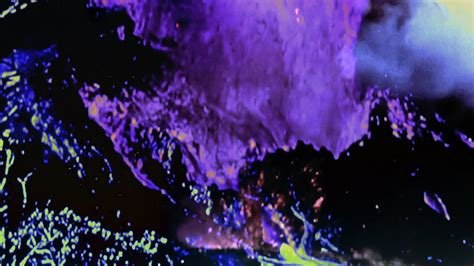Flicker
Content note: The films discussed, and linked to, in the piece contain strobe effects and are not suitable for anyone with photosensitivity or epilepsy.
In 2015, I taught a class titled “Experiments in Colour”. One week, I showed a series of short films that represented, and produced, altered states. I gave warnings about photosensitivity and ensured people felt comfortable leaving if they wished to, but still, there was a sense of collective risk as we embarked upon an unknown sensory experience with no preconceptions of what creative responses might emerge.
The first film I showed was Tony Conrad’s The Flicker.
Heike Helfert writes of The Flicker that “during the projection, light and dark sequences alternate to changing rhythms and produce stroboscopic and flickering effects; and while viewing these, they cause optic impressions, which simulate colours and forms. In the process, the film also stimulates physiological in place of psychological impressions, by not addressing the senses as such, but rather triggering direct neural reactions.”
This combination of the physiological and the psychological interested me, because so much of artmaking is in the space between those two areas. It helped me to remember that writing is an embodied practice, not an abstraction.
Pierre-Luc Vaillancourt’s Ruins Rider wasn’t released until 2017 so I couldn’t include it in the session, but I wish I had been able to.
Ruins Rider is a 47 minute flicker film that shows treated images of ruins in the Balkan landscape. Though the film does work to produce an altered state, it also provokes a response of curiosity and intrigue, a desire to make meaning from the images as they unfold.
Reviewer Connor writes that “Vaillancourt’s technique precludes the use of the Balkan ruins for specific historiographic purposes, gesturing instead to the ruin itself as a locus of collective mythology, a literalization of decay, of the structures of a civilization collapsing under their own weight.”
Though there is an indexical engagement with the landscape in the film, there is also a sense that the meaning is encoded in the response of the viewer. You might see an ancient ruin or you might glimpse a cosmic secret.
M Kitchell sees this as a kind of horror film, and he writes that “the history of ruin is a history of violence and erosion, ultimately the earth wearing down all that has been built by man, and the image here reflects that: there is no perfect visual acuity, you are not truly permitted to just look at these ruins, rather, as the title implies, one can only ride them. This posits the landscape as limit experience; a cinematic ride through the calm nightmare of entropy.”
Like the experience of being on a psychedelic trip, whether you perceive bliss or horror is largely down to your state of mind.
When I shared films like these with students, their creative responses were incredible. Often they were impressionistic and strange, something between the recollection of a dream and a map to an unknown world. Sometimes they were vivid and clear - the images laid out as precisely as objects in a gallery.
The work, so often, is to open a channel, and allow the frequencies to emerge.
To read more about Pierre-Luc Vaillancourt you can find an overview of his work along with an interview (in French) on Dennis Cooper’s blog.
Ruins Rider is still on Equinox for a few more days if you want to see it, but you can also sample the trailer here.


